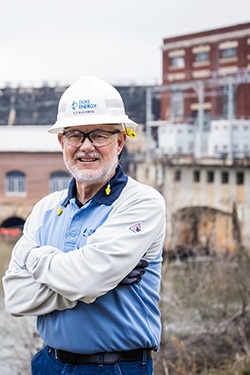Duke Energy: All About Clean, Renewable Hydro Power
Duke Energy's hydroelectric power efforts are a key part of its strategy to achieve net-zero carbon emissions by 2050. The company, which serves 8.2 million electric and 1.6 million natural gas customers across several states, operates 27 hydroelectric stations. Duke Energy's ambitious clean energy transition plan includes reducing carbon emissions by 50% by 2030 and 80% by 2040, with a final goal of net-zero by 2050. Additionally, Duke Energy is exploring advanced technologies like hydrogen and advanced nuclear power, while also investing in electric grid enhancements and energy storage solutions.
- Duke Energy is committed to net-zero carbon emissions from electricity generation by 2050.
- The company aims to achieve a 50% reduction in carbon emissions from electric generation by 2030.
- Duke Energy's hydroelectric stations are a significant part of its energy mix.
- The company is investing in electric grid enhancements and energy storage solutions.
- Duke Energy is exploring zero-emission power generation technologies such as hydrogen and advanced nuclear power.
- Named to Fortune's 'World's Most Admired Companies' list in 2023.
- Included in Forbes' 'World's Best Employers' list.
- No specific financial data or projections are provided in the press release.
- The long-term nature of the net-zero goal (by 2050) may not address immediate environmental or investor concerns.
- Interim targets for carbon emission reductions, though significant, are still decades away from full realization.
Here's a look at hydro power, the longest-running source of renewable energy
NORTHAMPTON, MA / ACCESSWIRE / June 6, 2024 / Ever since Catawba Hydro Station began supplying electricity to Victoria Cotton Mill in Rock Hill, S.C., in 1904, Duke Energy has harnessed the power of the water. Today, the company's 27 hydroelectric stations are still an important part of Duke Energy's balanced energy mix on the road to net-zero carbon emissions by the year 2050.
On this page you'll find beautiful photos and articles about the history of hydro plants, the investments Duke Energy is making in these assets, and employees committed to producing reliable, carbon-free energy to homes, businesses and industry.
Check out more about Duke Energy and hydro-power
Duke Energy
Duke Energy (NYSE:DUK), a Fortune 150 company headquartered in Charlotte, N.C., is one of America's largest energy holding companies. Its electric utilities serve 8.2 million customers in North Carolina, South Carolina, Florida, Indiana, Ohio and Kentucky, and collectively own 50,000 megawatts of energy capacity. Its natural gas unit serves 1.6 million customers in North Carolina, South Carolina, Tennessee, Ohio and Kentucky. The company employs 27,600 people.
Duke Energy is executing an ambitious clean energy transition to achieve its goals of net-zero methane emissions from its natural gas business by 2030 and net-zero carbon emissions from electricity generation by 2050. The company has interim carbon emission targets of at least
Duke Energy was named to Fortune's 2023 "World's Most Admired Companies" list and Forbes' "World's Best Employers" list. More information is available at duke-energy.com. The Duke Energy News Center contains news releases, fact sheets, photos and videos. Duke Energy's illumination features stories about people, innovations, community topics and environmental issues. Follow Duke Energy on Twitter, LinkedIn, Instagram and Facebook.
View original content here.

View additional multimedia and more ESG storytelling from Duke Energy on 3blmedia.com.
Contact Info:
Spokesperson: Duke Energy
Website: https://www.3blmedia.com/profiles/duke-energy
Email: info@3blmedia.com
SOURCE: Duke Energy
View the original press release on accesswire.com







